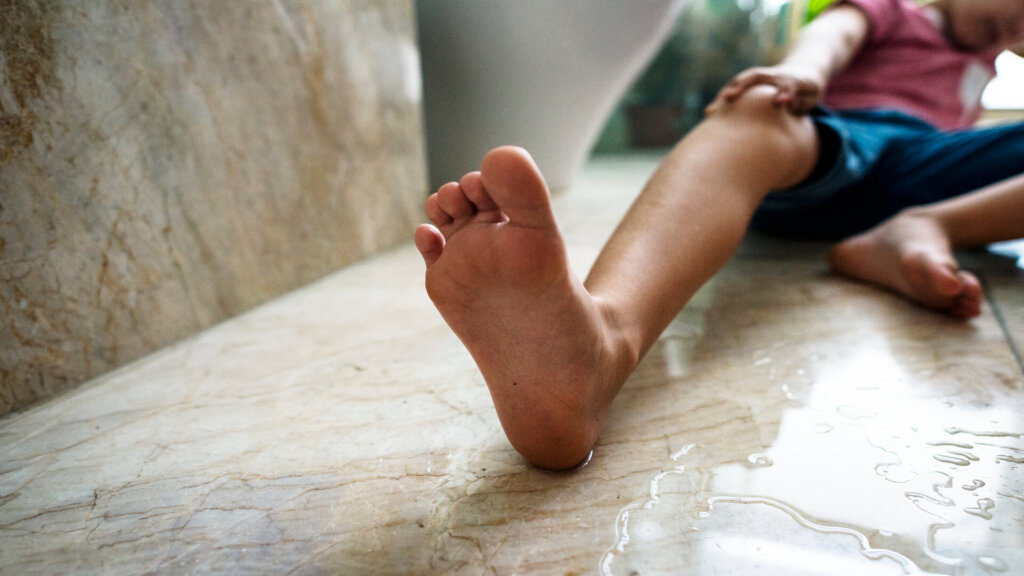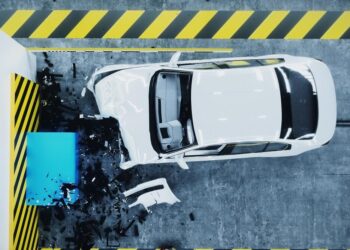Slip and fall/trip and fall cases are often difficult cases to win under Texas law. Of course, just because you fall and are injured on someone else’s property does not make them responsible for your injuries under the law. You first have to prove that the owners/managers of the property were somehow negligent. For example, let’s say you slipped/tripped and fell in a restaurant, store, or some other business open to the public. Under Texas law, you have to prove:
- Whatever caused you to fall was an “unreasonably dangerous condition;”
- The store (through its employees) either had actual knowledge of that specific condition or should have discovered the condition had they been doing reasonable inspections of their property; and
- The store did not adequately warn of the condition or otherwise make it safe.
Please allow me to briefly touch on each of the above elements to help you understand some of the challenges that may arise in proving your case.
The Unreasonably Dangerous Condition
You fell as a result of an “unreasonably dangerous condition.”
While there are exceptions, 99% of the time a condition is NOT “unreasonably dangerous” if it was “open and obvious.” In other words, if you had been paying reasonable attention you would have seen it. This is the “you should have been watching where you were walking – it’s your own fault” defense. Defendants always use this strategy to try to kill your case – because if a court agrees with them, it works – your case is done! As a result, we have to show that even a person paying reasonable attention would not necessarily have seen the hazard or have been able to avoid it.
Of course, 99% of the time you didn’t see the puddle or trip hazard before you fell – that’s how falls happen! But just because you didn’t see it does not mean that you weren’t paying reasonable attention. For example, clear liquid on a tile floor can be very difficult to see unless you’re specifically looking for it. And small abrupt changes in a walking service of just ½ an inch can easily cause a person to fall – again, this is something the average person would not likely notice unless they were specifically looking for it. It could also be that something was blocking your view of the hazard and that’s why you couldn’t see it or otherwise avoid it. Every case is different, but this is the first hurdle you must overcome to win your case.
Knowledge of the Hazard
The store had actual knowledge of this specific hazard before it caused you to fall.
To prove actual knowledge, we have to prove that someone at the store knew about the specific condition that caused your fall (i.e. the specific puddle on the floor). If you ever watched Perry Mason on television (I’m probably dating myself), there is always the “ah-ha” moment where Perry Mason gets the Defendant to admit guilt on the witness stand. As you might imagine, this rarely happens in real life. Can you guess what usually happens? That’s right – the store’s employees all deny knowing anything about it. It is very difficult to prove “actual knowledge” without an admission. However, under Texas law there are situations where we can prove actual knowledge by showing that the employee created the condition. In other words, if we can prove that an employee caused the spill, then under Texas law they are deemed to have had “actual knowledge” of it (because they created it).
Constructive Knowledge
In situations where we cannot prove actual knowledge, under Texas law, we can still prove your case if we can show “constructive knowledge.”
In general terms, this means that the spill was on the floor for a long enough period of time that if the store had been reasonably inspecting their floors that they would have discovered the spill. The next logical question is: “How long does something have to be on the floor before an employee should discover it?” There is no set time-frame under the law – it really depends on the circumstances such as the location of the spill, the time of day, how busy the store was, etc. The biggest challenge in proving constructive knowledge is having evidence of how long the spill was on the floor. Sometimes there is video surveillance footage – but even then, the video is usually not high-quality enough to show clear liquid on the floor and there is nothing obvious on the video to show the source of the spill. And in cases where no video exists as all, it can make proving your case even more challenging.
It is the combination of the above that make Texas premises liability cases extremely challenging to prove. If the condition is easily visible then it could be determined to be “open and obvious” and therefore not an unreasonably dangerous condition. But if the condition is too difficult to see then it could be found that an employee would likely not have discovered it even if they had been doing reasonable inspections. It is like trying to walk through a minefield where at every turn the wrong step could kill your case. That is why it is so important to speak with a premises liability expert as soon as possible if you have been seriously injured on someone else’s property.
No Adequate Warning
The store did not adequately warn of the condition or otherwise make it safe. If there are warning signs, wet floor signs, or cones nearby, these could be enough to show that the store warned you and therefore you have no case.
What to do if you’re injured in a slip and fall or trip and fall accident.
If you are injured in a fall, gathering evidence is probably the last thing on your mind. But if you are able, or if you are with someone when you fall, try to remember to take the following steps:
- Take photos of the entire scene – not only should you take plenty of photos of what caused your fall but try to scan and photograph the surrounding area as well. If you fell in a puddle of water on the floor, are there other puddles in the area? Is there a trail of drops of water that could provide clues as to what caused this puddle? Also, look up! Are there surveillance cameras in the area? If so, photograph them to prove there were cameras in the area. Could the puddle be dripping from the ceiling? Are there signs of water damage or a leaky roof? It is better to take too many photos than not enough – you never know what could prove to be important later.
- Witness information – sometimes people may come up to you to check if you’re okay but when a store employee or manager arrives, they figure you’re being taken care of and they leave. Ask the witness if they saw you fall and if they would please give you their name and phone number in case anyone needs to speak with them.
- Notify someone in charge – always let a manager know exactly what happened before you leave the store.
- Get the names of every employee and manager who comes to the scene (first names are usually enough) and write them down.
- Speak with the manager – determine if there’s video and make sure they save it. Most often store video surveillance is stored on a “loop” which means it records over itself after a certain amount of time – sometimes after as little as 24 hours. If the store doesn’t pull and copy the video it will be lost forever.
- Remember to cut yourself some slack. Usually the first two emotional states you will encounter immediately after a fall are shock/surprise and embarrassment. These emotions can sometimes cause people to get up as soon as possible and leave the scene or to say things like “I wasn’t watching where I was going” when in fact you were paying attention, but due to the circumstances you couldn’t see the hazard. It is only later when you realize your injuries are more severe than you initially hoped that you wish you would have handled things differently and kept your head about you.
- Get medical attention – don’t delay in getting medical attention if you need it.
Of course, every premises liability case is different and under Texas law, there are many nuances that could affect your case, including the type of the premises, why you were on the premises, the location of the premises, where on the premises you fell, etc. That is why it’s important to contact a Dallas premises liability attorney as soon as possible if you’ve been hurt in a slip and fall accident.








